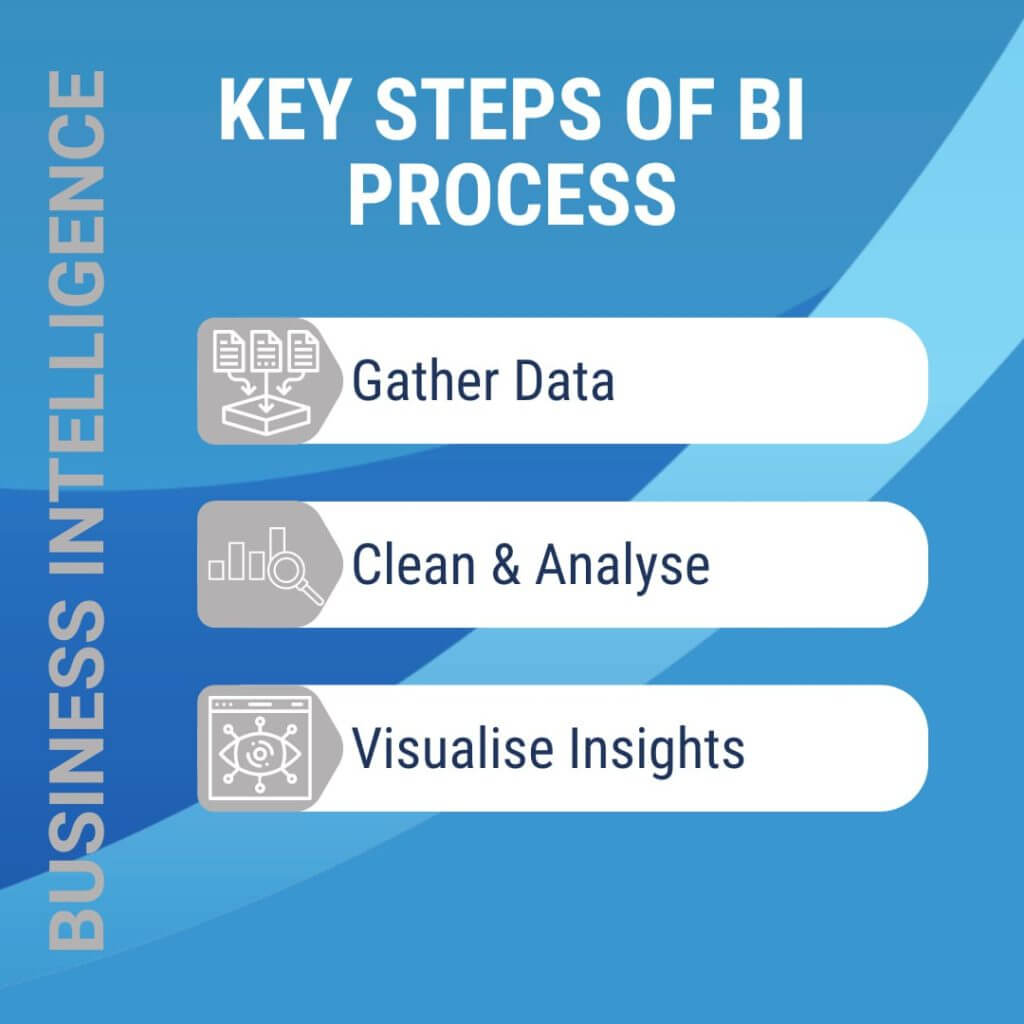Uncover hidden opportunities. Stop guessing, start knowing. Transform Powerful BI services for your business.


BI is like a magnifying glass for your company’s information.
It gathers data from various sources, analyses it, and presents it in clear reports, dashboards, and charts.
This makes it easy to see trends, identify patterns, and understand what’s working (and what’s not) within your organisation.



Business intelligence (BI) offers a suite of tools to analyse your data.
These go beyond reports, providing user-friendly dashboards, in-depth analytics, and more.
A key feature is ad hoc analysis, allowing you to ask specific questions and uncover hidden trends on the fly.
Think of BI as a powerful search engine for your data, driving better business decisions.
While there isn’t a universally agreed-upon set of four concepts, some core principles of BI include:
BI involves a series of ongoing tasks to unlock the power of your data:
While specific needs vary, some leading BI solution providers are well-established in Australia and cater to local businesses. Here are a few to consider:
The BI landscape offers a vast array of tools, each serving a specific purpose. Here are some key categories:
Example of a Business Intelligence Tool: Microsoft Power BI is a popular BI platform offering a variety of features for data analysis and visualisation
Business intelligence (BI) utilises various methods to extract valuable insights from your data. Here are some key techniques:
Business intelligence software goes beyond simple reporting. It offers a comprehensive suite of tools to transform your data into actionable insights that can empower your business. Here are some key uses:
BI can be categorised into three main areas, each focusing on a different aspect of data analysis:
By combining these three types of BI, businesses can gain a holistic understanding of their data, make smarter decisions, and achieve their strategic goals.
